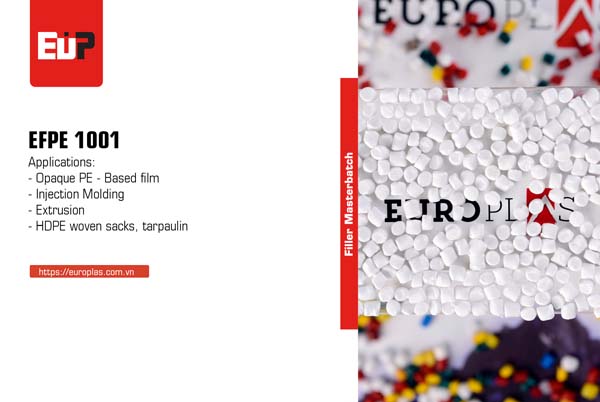 Filler masterbatch for plastics
Filler masterbatch for plastics
There are 2 main solutions for filler’s surface treatment. Their functions and purposes are different. One is related to chemical bonding and one is not.
Chemical bonding treatments are used when manufacturers want to enhance the adhesion between fillers and polymers, to improve mechanical properties but impact strength. In contrast, non-bonding treatments enhance the ease of dispersion and handling. In some circumstances, it can control its tendency to abrade machinery.
However, there is some overlap of functions. These 2 solutions normally both enhance the water resistance, and the chemical bonding sometimes improves dispersion.
Surface Treatment of Fillers by Coupling Agents and Wetting Agents
Wetting Agents
Wetting agents are easily extracted from composites; they are not permanent. FYI, they cannot survive in high humidity because they destroy the temporary bond.
Filler manufacturers prefer using mixtures for economical reasons when it comes to nonbonding treatments.
To leverage the compatibility with hydrophobic polymers and the dispersion, wetting agents or surfactants can be adsorbed onto the filler surface and change its character. Manufacturers can mix 0.5 to 1 percent by weight of stearic acid with calcium carbonate. It is subjected to high shear mixing at high temperatures.
The treatment reduces moisture absorption, enhances processability, electrical and mechanical properties of the filled polymer.
Coupling Agents
On the other hand, coupling agents have 2 reactive chemical groups, one to bond to the filler and one to the polymer.
The ideal example is the organosilanes, which promote adhesion to resins. It completely dominates the glass fibres market. A silane usually incorporates a highly reactive chemical group.
The existence of a chemical reaction between filler and coupling agent depends not just on the nature of the coupling agent but also on the filler. Silanes react readily with glass beads, metal hydroxides, clay, silica, the silicates, wollastonite, mica and various oxides, but not with calcium carbonate, carbon black or barium sulphate.
Not only the nature of the coupling agents but also the fillers have impacts on the existence of a chemical reaction. It is normal when silanes react with mica, clay, glass beads...but not with carbon black, BaSO4 or CaCO3 (calcium carbonate).
 Calcium carbonate and Taical fillers
Calcium carbonate and Taical fillers
Actually, the fillers have a considerate impact on the improvement of the filled polymer properties. Glass, silica, and alumina give the biggest results, followed by talc, clay, and wollastonite. Carbon and calcium carbonate have little benefit. If the right functional groups are chosen, silanes bond well to thermosetting polymers except for PE.
Stearic acid treatment is an essential solution for calcium carbonate because CaCO3 is not responsive to chemically reactive silanes.
Other chemicals include aluminates, zircoaluminates, organotitanates… can improve adhesion, but there is no need for eliminating water molecules. Zirconates and titanates have much more varied applications, but mostly related to fillers.
Titanates are currently used with calcium carbonate to reduce the viscosity of filled
thermosetting polymer systems.
Titanates are used to reduce the viscosity of filled thermosetting polymer systems, however; it can react with phenolic antioxidants in coupling agents or other additives. The situation can cause discoloration. Therefore, many manufacturers prefer zirconates over titanates since they do not react to other elements.
Fillers can be made to bond to polymers by functionalizing the polymer (incorporating
appropriate chemical groups into it) to enable it to react chemically with the filler surface.
Maleic anhydride is a widely used functional unit often incorporated into polypropylene, and to a lesser extent polyethylene. AlkoxySilyl groups can be incorporated into hydrocarbon polymers to increase their reactivity.